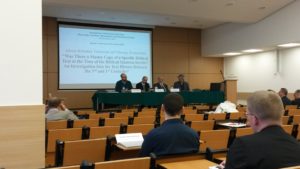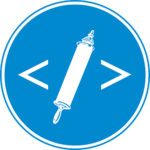I am writing this blog post from Lublin, Poland. Regularly, the members of the ETCBC present their work in the Netherlands and abroad. Now it is my turn. I will be presenting my research at the conference The Dead Sea Scrolls Seventy Years Later: Manuscripts, Traditions, Interpretations, and Their Biblical Context, which is organized by the Institute for Biblical Studies of the John Paul II Catholic University of Lublin. Since it is seventy years ago that the first Dead Sea Scrolls were discovered in Qumran, the aim of the conference is to evaluate the fruits of seventy years of research into various areas of the Dead Sea Scrolls, from paleography to the interpretation of the texts. Among the speakers are Emmanuel Tov, Adrian Schenker, Eibert Tigchelaar, Loren Stuckenbruck, and John Collins.
My contribution discusses Qumran Hebrew from the perspective of verbal valence patterns, i.e., the patterns the verb forms with its arguments, such as objects and prepositional phrases. After seventy years there is still discussion on the nature of the Hebrew that is used in the scrolls. Most research focused on separate words, although syntax is a more reliable gauge for studying language variation and change, because the construction of sentences is a less conscious part of the language than for example vocabulary and morphology. Verbal valence patterns are for a large part responsible for the construction of sentences and therefore helpful in the study of syntax. In my presentation, I will evaluate the few studies related to verbal valence that have been conducted up until now. I will also make some recommendations for future research on verbal valence patterns in Qumran Hebrew.
Among my recommendations are the use of a database and being transparent. A problem in many of the existing studies is that it is not clear how the authors arrived at their conclusions and where they got their data from. Since methods are not explained, it is hard to argue about deviating results. If methods are explained and full data are shared, research can be repeated and substantive discussion is possible, which would help the field forward. Helpful tools for this end are an open access database, such as the ETCBC database, and sophisticated search opportunities that support online sharing, such as TextFabric and Shebanq.
For those who are interested in my presentation, the slides can be found here.




